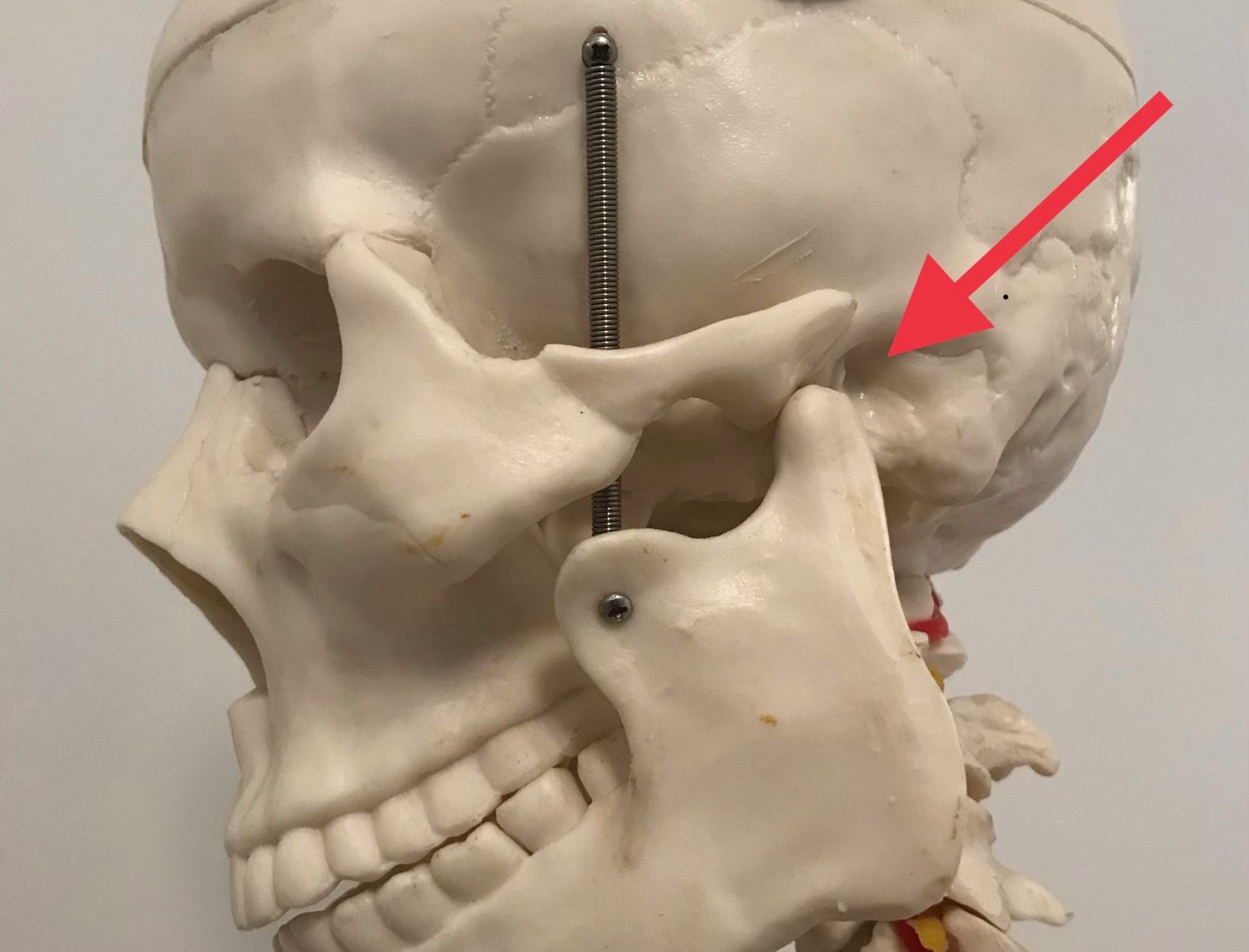Let’s talk this over !
TMJ stands for temporomandibular joint and refers to your jaw. It consists of a lower and upper part, on each side, that articulate together and are separated by a disc.
The anatomy of the jaw is such that the lower part or mandible has a condyle that rests in the socket of the upper part of the jaw, which is the temporal bone and is part of the skull.
There are two main movements of the TMJ – a hinging action that is then immediately followed by a forward gliding motion which is facilitated by the intra-articular disc. The correct movement of the jaw is important for normal function and helps to keep people pain free.
This is quite a vulnerable joint and can create problems for people. It’s one of the most frequently used joints and can be overlooked when being examined for certain issues, such as headaches. It’s estimated that the temporomandibular joint is used between 1,500 – 2,000 times a day during activities such as chewing, talking, swallowing, yawning and snoring.
When a clinician is assessing someone’s jaw, first they will start by taking a history and asking questions. By doing this they are hoping to narrow down the possible pain generating tissue.
The TMJ can cause multiple issues. The most obvious might be direct jaw pain or restricted movement but issues such as headaches can be less obviously associated with the jaw.
Other jaw issues are:
- ear ache
- lock jaw
- tinnitus
- clicking or grinding sounds
- bruxism (grinding of the teeth or clenching the jaw)
- nerve irritation and resultant nerve pain.
The clinician will inspect the jaw by looking at the movement as you open and close your mouth. Primarily they are looking for asymmetry such as that depicted below (jaw span), a bony and soft tissue palpation, where they feel the joint and, as it moves, try to determine any bio-mechanical problem. There is some simple muscle testing and a few neurological tests that may be performed too.
If a problem is found then some treatments can be offered by your chiropractor, but others may require a dentist or doctor.
There are a wide range of management options, from manual treatments to home treatments, including ice or heat, jaw exercises / stretches, muscle relaxation techniques, medication and mouth guards.
Possible issues
Some issues we see are muscle tightness which can cause asymmetrical movement of the jaw, pain and referred pain.
There are 4 muscles of mastication (chewing) that move the jaw; the temporal muscle, medial and lateral pterygoids (found inside the mouth) and the largest, the masseter. If these get tight and tense they build up with toxins and become painful. If very painful, they can refer pain.
Bruxism is a common issue and is characterised by jaw clenching and teeth grinding. This is often done unconsciously and can be caused by emotional stress. Physically it can result in muscle tightness which can be treated by a manual therapist and also with a mouth guard from the dentist. A mouth guard can help off load pressure from the jaw and protect the enamel on your teeth. If the main cause is possibly psychological, then relaxation techniques and regular stretching is a good approach to manage this.
Intra-articular disc issues can be very painful and can be more complicated. The disc can become displaced or can degenerate which can alter the smooth movement of the jaw.
If simple treatments are not helping then sometimes surgery is required. Before this is considered though, a full consultation with a doctor is required.
Check our Instagram and Facebook pages throughout the month for our Top Tips for exercises that might help give some relief for TMJ pain.
https://www.instagram.com/thestudiodurhamhouse/
https://www.facebook.com/DurhamHouseChiropractic/


